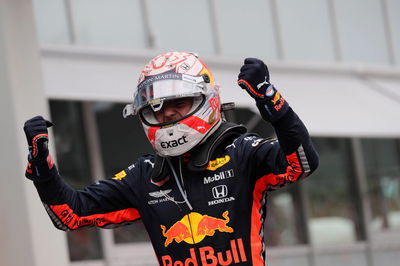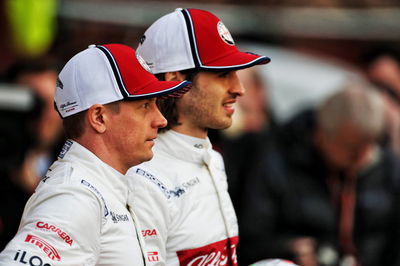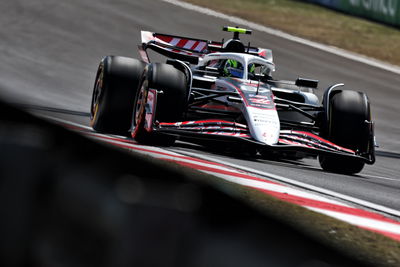F1 Race Analysis: The six laps that decided Hockenheim’s thriller
On a weekend where the Netflix camera crew has seemingly been more present than ever, it was perhaps fitting that the German Grand Prix encapsulated the meaning of ‘drive to survive’ in Formula 1.
Just 13 cars made it to the finish after a wet and wild race at Hockenheim that produced one of the most surprising results in recent memory.
Max Verstappen winning in the rain may not be that surprising, nor may Sebastian Vettel finishing second (ignoring the fact he started last). But Daniil Kvyat third? Lance Stroll P4? Perhaps craziest of all, Williams scoring a point?!
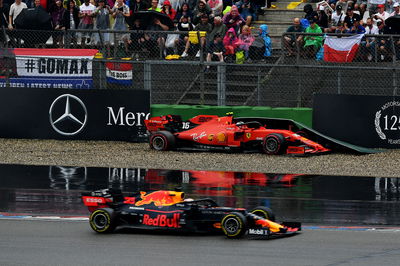
On a weekend where the Netflix camera crew has seemingly been more present than ever, it was perhaps fitting that the German Grand Prix encapsulated the meaning of ‘drive to survive’ in Formula 1.
Just 13 cars made it to the finish after a wet and wild race at Hockenheim that produced one of the most surprising results in recent memory.
Max Verstappen winning in the rain may not be that surprising, nor may Sebastian Vettel finishing second (ignoring the fact he started last). But Daniil Kvyat third? Lance Stroll P4? Perhaps craziest of all, Williams scoring a point?!
Even in damp conditions where driver talent supposedly comes to the fore, this was a race where tiny, tiny margins made all the difference in making the decisive tyre calls. And the battle for victory really boiled down to a six-lap saga near mid-distance.
Rain in the build-up to lights out at Hockenheim prompted FIA race director Michael Masi to debut the revised wet start rules that were introduced at the start of 2018. Under this ruling, the cars would pull away behind the Safety Car with a set of formation laps until the track was deemed wet enough for the race to begin, either from a standing start or a rolling start. In this case, just three laps of the race were lost, and a grid start was maintained.
The other kickback of this rule is that all drivers must start on the full Wet tyres, forcing the field into the same strategy early on. While the track was comfortably ready for Intermediates, the loss of track position on the Wets would have been too great given how the field was bunched.
But once the Safety Car was deployed on Lap 3 after Sergio Perez’s pirouette into the wall exiting Turn 11, the field had an excuse to come in and make the switch. Mercedes ensured its drivers stayed P1 and P2 by getting Valtteri Bottas to back up the field, creating himself a gap to leader Lewis Hamilton, while a handful of drivers including Kevin Magnussen, Lance Stroll and Lando Norris opted to stay out on Wets and gain track position. It would backfire, though, with all of those staying out at first being forced to pit within the next five laps, costing them even more track position in the process.
Things were pretty straightforward at this point. The lead runners had all done the right thing – but it was about to get very marginal indeed.
The race settled down for a little while after the early Safety Car, with Hamilton forging a decent lead at the front of the pack as teammate Bottas was occupied with Max Verstappen behind. The Intermediate was certainly the right tyre to be on at this stage, but with fears of more rain to come down the line, a number of drivers were told to ease off a bit so they did not use up all their tyre life.
While unable to keep up with the pace of the leading trio, Charles Leclerc and Nico Hulkenberg had pulled out a decent gap over the rest of the field in P4 and P5 respectively, inadvertently putting them onto a better strategy. Both were able to take advantage of a brief Virtual Safety Car period for Daniel Ricciardo’s stricken car to pit for a fresh set of Intermediates for a minimal loss (Leclerc kept fourth, Hulkenberg lost a place to Kimi Raikkonen, which he retook within three laps).
Leclerc quickly began to light up the timesheets, running around 2-3 seconds per lap faster than anyone else on-track to quickly draw close to the scrap between Bottas and Verstappen. Had the track not dried as quickly as it did around Lap 20, Leclerc would likely have swept past them both before setting his sights on Hamilton ahead.
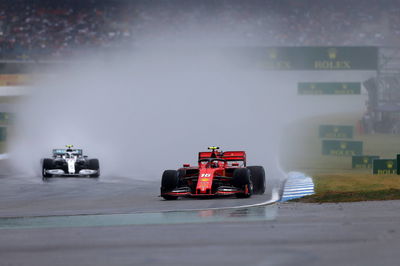
Instead, it soon became time for a switch to slicks despite the warnings of an imminent rain shower. While the stadium section was still moist, the rest of the track was ready for slicks – enough of a gain to make it worthwhile, it seemed.
In the space of six laps, three drivers squandered their chance to win the race. The fourth – Max Verstappen – did not.
Lap 25: With Leclerc starting to loom large in his mirrors, Verstappen became the first of the front-runners to gamble on slicks. He took on Medium tyres – offering less grip than the Softs.
Lap 26: Bottas comes into the pits for Mercedes, taking Softs. Verstappen has a spin in the final sector that costs him around 20 seconds, theoretically knocking him out of contention at the front.
Lap 27: For the second time in the race, Leclerc gets a lucky break with a VSC, this time called after a stoppage for Lando Norris on-track. The reduced pace of the field means Leclerc can pit can come out of the pits ahead of Bottas, placing him net P2.
Lap 28: With a 30-second buffer over the field, Hamilton finally pits from the lead to make the same switch – except it is now not the time for slicks as Leclerc slides off the track at Turn 16, into the wall and out of the race. The Safety Car is deployed.
Lap 29: Still leading despite a slow first pit stop, Hamilton makes a similar error to Leclerc as he too goes off at Turn 16, taking his front wing off and only just about keeping his car going. A farcical pit stop follows as the team makes a late call for Intermediates without having them ready, leaving Hamilton’s car stationary for 50 seconds. Verstappen pits for the second time in five laps, moving back to Intermediates.
Lap 30: Having missed the chance to pit Bottas amid Hamilton’s pit calamity, Mercedes is forced to bring the Finn in with the field already starting to bunch behind the Safety Car. This costs him two positions, and cycles Verstappen into the lead.
From here, Verstappen always had the race under control. Running out of the spray and out of the dirty air of cars ahead, he kept it comfortable, taking a free stop under the Safety Car for another set of Intermediates under a Safety Car on Lap 41 that had wiped away a nine-second lead before moving back to Softs in sync with the rest of the field six laps later.
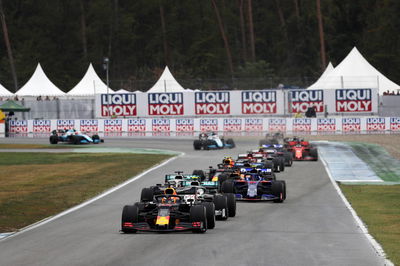
But there was still some drama to be served up in the closing stages, with that final switch to Softs paving the way for the most surprising part of the result as Daniil Kvyat and Lance Stroll made their late rise.
Running last but one under the Safety Car called following Nico Hulkenberg’s crash at Turn 16, Stroll asked Racing Point if he could gamble on moving back to slicks. The team agreed and brought him in, dropping Stroll to last.
It was an inspired call. Toro Rosso and Haas had cottoned on to the switch, prompting them to do the same with Kvyat and Kevin Magnussen respectively as the race returned to green, losing a heap of time in the process. Surely they’d missed their window?
No - the time to be found on slicks was so great that Kvyat was in fact able to gain 10 places in two laps, placing him P3 once the rest of the field had made the same switch. Stroll’s move had been so well-timed that he in fact briefly led – albeit for just half a lap, meaning the official records will never reflect it – before being passed by Verstappen.
The other big gainer in the final stint was Sebastian Vettel – but he also missed a huge opportunity. He was one of the last drivers to pit for slicks, meaning he came back out in P9 before his late charge up the order. Had he pitted in line with Verstappen on Lap 46, he would most probably have sat fifth behind Verstappen, Stroll, Kvyat and Bottas with more time to make the kind of passes we saw late on. One to ponder.
Alas, it was Verstappen who rightly took all of the plaudits after the race. The hot-headed kid we knew 18 months ago is a far cry from the mature, patient racer that has won two of the last three races, keeping his head and capitalising on his rivals’ misfortunes at precisely the right moment.
“If you can keep your head when all about you are losing theirs…”
